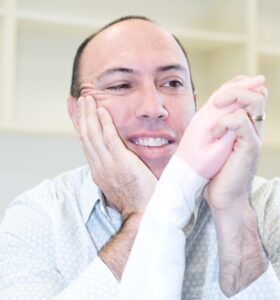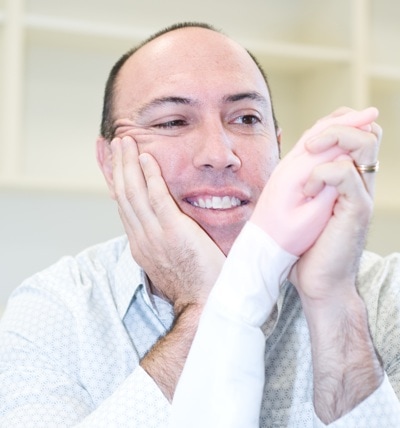I was going to call this post ‘Immune effects on thinking, memory, neuroplasticity and neurogenesis’ but I thought it sounded a bit high-brow. In fact, for the first time in my brief bloglife I have found myself stuck on an opening, but I think I might know why. It is 5.20am, I rode my bike 50km yesterday and this morning I have a few more creaks and groans than usual – clearly a few primary nociceptors are sensitised, perhaps a dorsal horn neurone or two is wound-up; Lord Adorable Squeaky Pants (fast approaching an age where such a title is seriously uncool) started sneezing uncontrollably at about 1am and spent the rest of the night playing the snot trumpet on my pillow; the School oval across the road was just mowed and even the fresh smell of cut lawn induces histamine hysteria in my eyes. All this is relevant because I have just decided to focus a bit on immune effects on neural function – including the ability to think. I am by no means well authorised to write this – I am indeed a Neurocentric – but I am going to have a go. I really hope that Dr Mick Thacker from King’s College London, widely held to be the Worlds Nicest Smart Person, reads this and takes the bate of commenting because HE actually knows about this stuff. I instead am relying heavily on Raz Yirmiya & Inbal Goshen’s recent paper[1] on this topic published a couple of months ago.
I once heard David Butler say that Mick Thacker had said that he heard someone describe the immune system as something that differentiates between self and non-self. That is the immune role with which we are most familiar, but the immune system also plays an important role in tissue remodelling – muscle, fat, reproductive organs, bone (eg it is the osteoclasts, macrophage-like cells, that regulate bone structure and function by secreting all sorts of cytokines and chemokines that adapt the bone its environmental demands – but just in case you thought it might be remotely simple, osteoclasts are also under endocrine and neural influences[2]). The brain is no exception to this – it undergoes profound remodelling, both functionally and structurally, and immune cells (microglia, astrocytes, T-cells and maybe mast cells) play a critical role in cleaning up the debris of pruned axons and dendrites and, as we will see in a subsequent post, in the facilitation of new neuronal growth, called neurogenesis. What’s more these neuroimmune responses, in the perfectly healthy human, can activate top-down influences over the body, most famously through the HPA axis and the autonomic nervous system[3]. Activation of these systems triggers powerful feedback loops that modulate neuroplasticity and neurogenesis.
All that is good and well, but what has it got to do with my writer’s block? Alot, apparently. It seems that immune mediators that are upregulated by nociceptive activation, by hay fever, by a common cold or a less common lergy, have real time effects on the way our brain works. In this mini-series I will try to get a handle on the basics of what is known about these effects. I reckon they cast some interesting light on those people with chronic pain who say that they can’t think straight anymore or who say they have started to forget where they put things. So, here’s the plan: to understand the tip of the iceberg when it comes to the relationship between immune mediators and learning, neuroplasticity and memory. Ambitious? I suspect so
About Lorimer Moseley
 Lorimer is NHMRC Senior Research Fellow with twenty years clinical experience working with people in pain. After spending some time as a Nuffield Medical Research Fellow at Oxford University he returned to Australia in 2009 to take up an NHMRC Senior Research Fellowship at Neuroscience Research Australia (NeuRA). In 2011, he was appointed Professor of Clinical Neurosciences & the Inaugural Chair in Physiotherapy at the University of South Australia, Adelaide. He runs the Body in Mind research groups. He is the only Clinical Scientist to have knocked over a water tank tower in Outback Australia.
Lorimer is NHMRC Senior Research Fellow with twenty years clinical experience working with people in pain. After spending some time as a Nuffield Medical Research Fellow at Oxford University he returned to Australia in 2009 to take up an NHMRC Senior Research Fellowship at Neuroscience Research Australia (NeuRA). In 2011, he was appointed Professor of Clinical Neurosciences & the Inaugural Chair in Physiotherapy at the University of South Australia, Adelaide. He runs the Body in Mind research groups. He is the only Clinical Scientist to have knocked over a water tank tower in Outback Australia.
References

[1] Yirmiya R, & Goshen I (2011). Immune modulation of learning, memory, neural plasticity and neurogenesis. Brain, behavior, and immunity, 25 (2), 181-213 PMID: 20970492
[2] Teitelbaum SL (2000). Bone resorption by osteoclasts. Science (New York), 289 (5484), 1504-8 PMID: 10968780
[3] Besedovsky, H., & Rey, A. (2007). Physiology of psychoneuroimmunology: A personal view Brain, Behavior, and Immunity, 21 (1), 34-44 DOI: 10.1016/j.bbi.2006.09.008



